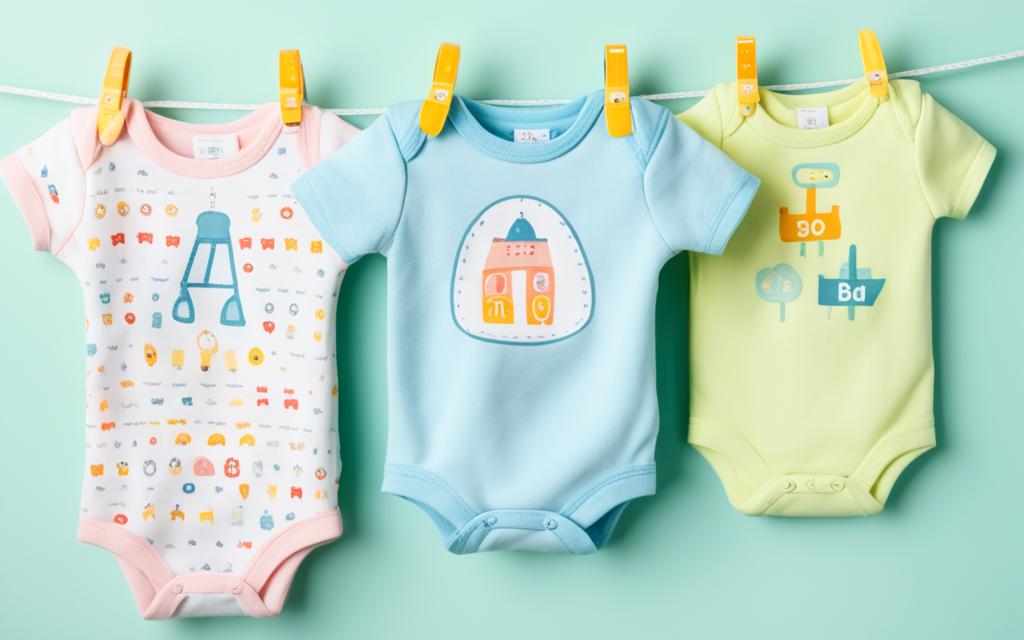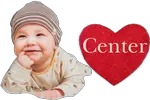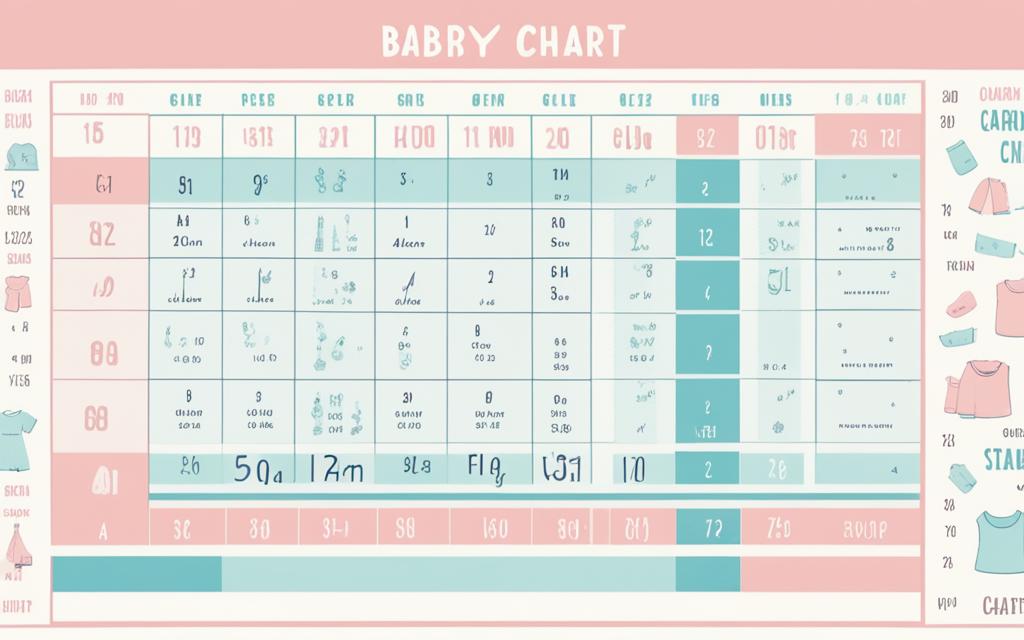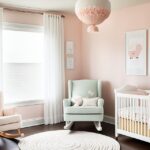Welcome to our comprehensive guide on understanding what size 80 is in baby clothes. As a parent, you want to make sure that the clothes you buy for your little one fit them perfectly, providing comfort and style. In this guide, we will walk you through everything you need to know about baby clothing sizing, including a size chart and conversion information.
When it comes to baby clothes, sizing can be confusing. What does size 80 mean? How does it correspond to your baby’s age and measurements? We understand that these questions may arise, and we’re here to provide you with the answers.
Key Takeaways:
- Understanding the size 80 in baby clothes is essential for selecting the right fit for your little one.
- A baby clothing size chart can help you determine the appropriate size based on your baby’s age and measurements.
- Consider factors like brand variations, growth spurts, and fabric stretch when choosing size 80 baby clothes.
- Measuring your baby, checking size charts, and considering future growth are important shopping tips for size 80 baby clothes.
- If you’re unfamiliar with the baby clothing size system, a conversion guide can help you understand size 80 in relation to international sizes or specific brand measurements.
Decoding Baby Clothing Sizes
When it comes to buying baby clothes, understanding the different sizing options is essential. After all, you want your little one to be comfortable and stylish in their adorable outfits. Baby apparel sizing can be confusing, with various terms like “size 80” and “infant clothing size chart.” But fret not, we’re here to help you decode those sizes and find the perfect fit for your bundle of joy.
One of the most helpful tools for parents is an infant clothing size chart. This chart provides a handy reference that gives you a general idea of what size to choose based on your baby’s age and weight. It takes the guesswork out of shopping and ensures that you’re selecting clothes that will fit your little one just right.
| Size | Age Range | Height Range (inches) | Weight Range (lbs) |
|---|---|---|---|
| 0-3M | Newborn | Up to 21.5 | Up to 12.5 |
| 3-6M | 3-6 months | 21.5-24 | 12.5-16.5 |
| 6-9M | 6-9 months | 24-26.5 | 16.5-20.5 |
| 9-12M | 9-12 months | 26.5-29 | 20.5-24.5 |
Remember that every baby is unique, so these measurements are just a general guide. It’s always a good idea to measure your own baby before making a purchase. Additionally, keep in mind that different brands may have slightly different sizing, so it’s essential to check the specific brand’s size guide if available.
Pro tip: As babies grow quickly in their first year, it’s often helpful to buy clothes with a little extra room to accommodate growth spurts. This way, you can get more wear out of each item.
Decoding baby clothing sizes doesn’t have to be a daunting task. With an infant clothing size chart and an understanding of how to choose the right fit for your little one, you’ll be able to shop with confidence and dress your baby in adorable and comfortable outfits. Stay tuned for the next section, where we’ll delve into size 80 in baby clothes and provide a comprehensive guide to understanding this specific size.
Understanding Size 80
When it comes to buying baby clothes, understanding the sizing can sometimes be confusing for parents. One common size that you may come across is size 80. In this section, we will take a closer look at what size 80 means and provide a helpful guide for parents.
Age and Measurements:
Size 80 in baby clothes typically corresponds to babies who are around 9-12 months old. However, it’s important to note that different brands may have slight variations in their sizing charts. To ensure the best fit for your baby, it’s always recommended to refer to the specific brand’s size chart.
In terms of measurements, size 80 usually corresponds to a baby’s height ranging from 75cm to 85cm (29.5″ to 33.5″) and a weight between 9kg to 11kg (19.8lbs to 24.2lbs). These measurements serve as a general guideline to help you determine whether size 80 would be appropriate for your little one.
Conversion Chart:
For parents who are unfamiliar with baby clothing sizes or wish to convert size 80 to other sizing standards, a conversion chart can be particularly helpful. Here’s a simple conversion guide:
| Size 80 | International Size | US Size |
|---|---|---|
| 80 | 12-18 months | 12-18M |
This conversion chart provides an approximate comparison of size 80 to international and US sizes. However, it’s important to refer to the specific brand’s size chart for accurate measurements to ensure the best fit.
Buying Tips:
- Measure your baby’s height and weight accurately to determine if size 80 is the right fit.
- Refer to the brand’s size chart for precise measurements and recommendations.
- Consider your baby’s growth rate and buy clothes that allow room for growth.
Remember, every baby is unique, and some may require a slightly larger or smaller size than what is typically expected for their age. By understanding size 80 and following these buying tips, you’ll be well-equipped to select the perfect clothing for your little one.
Factors to Consider
When selecting baby clothes in size 80, there are several factors that parents should take into consideration to ensure the perfect fit for their little one. These factors include brand variations, growth spurts, and fabric stretch. Here’s a closer look at each:
Brand Variations
Different baby clothing brands may have slight variations in their sizing, even when labeled as size 80. It’s essential to consult the specific brand’s size chart to ensure a proper fit for your baby. Taking measurements and comparing them to the brand’s size guide will help you make an accurate selection.
Growth Spurts
Babies grow at a rapid pace, especially during their first year. It’s important to consider their growth rate when choosing size 80 clothes. Opt for clothing with a little extra room to accommodate your baby’s growth spurts, ensuring they can wear the clothes for a longer period.
Fabric Stretch
Some fabrics have more stretch than others, allowing for a better fit and added comfort. When selecting baby clothes in size 80, consider choosing garments made from stretchy materials such as cotton-spandex blends or knit fabrics. This flexibility will accommodate your baby’s movements and make dressing easier.
Remember, these factors may vary between brands and individual babies, so it’s always a good idea to try clothes on your baby whenever possible to ensure the best fit.
Now that you understand the key factors to consider when selecting size 80 baby clothes, you can confidently make informed decisions based on your baby’s needs and measurements.
Shopping Tips for Size 80 Baby Clothes
When it comes to shopping for size 80 baby clothes, there are a few essential tips that can help parents find the perfect fit for their little ones. Here are some practical suggestions to consider:
1. Measure Your Baby
Before making any purchases, it’s crucial to measure your baby to ensure the clothes will fit comfortably. Use a soft measuring tape and take measurements of their chest, waist, and height. Refer to a baby clothing size chart to match these measurements with the recommended size.
2. Check Size Charts
Every brand may have slight variations in their size 80 clothing, so it’s important to refer to their specific size chart. This will give you a better idea of how their clothes are designed to fit and help you make an informed decision. Keep in mind that the size chart may also provide information on other measurements, such as weight or age range.
3. Consider Future Growth
While it’s essential to find clothes that fit your baby’s current measurements, it’s also wise to consider their future growth. Babies grow quickly, and clothes that fit perfectly now may become too tight within a few weeks. Look for clothing with some extra room to accommodate for growth spurts.
4. Pay Attention to Fabric Stretch
Some fabrics have more stretch than others, which can affect the fit of the clothing. Stretchy materials tend to be more forgiving and can provide a better fit for growing babies. Keep this in mind when choosing clothes for your little one.
5. Read Reviews
Before making a purchase, take the time to read reviews from other parents who have bought size 80 baby clothes from the same brand. Their experiences can give you valuable insights into the fit, quality, and overall satisfaction with the clothing.
6. Consider Brand Variations
It’s worth noting that different brands may have their own interpretations of size 80. While one brand’s size 80 may fit perfectly, another brand’s version might run smaller or larger. Take this into account when choosing clothes for your baby.
7. Opt for Adjustable Features
Choosing clothes with adjustable features, such as elastic waistbands or adjustable straps, can provide a more customized fit for your baby. These features allow you to adapt the clothing as your baby grows, ensuring longer wear.
8. Prioritize Comfort
Above all else, prioritize your baby’s comfort when selecting size 80 clothes. Opt for soft, breathable fabrics that won’t irritate their delicate skin. Additionally, choose clothes with room for movement to allow your little one to explore and play comfortably.
By following these shopping tips, you can confidently select size 80 baby clothes that will fit your little one perfectly and provide optimal comfort throughout their growth.
Common Concerns and Solutions
When it comes to buying size 80 baby clothes, parents often have concerns about the fit and comfort of their little ones. Don’t worry! We have you covered with some common concerns and solutions to help you make the right choices for your baby.
1. Clothes That Are Too Tight
If you find that your baby’s clothes are too tight, it can be uncomfortable for them and restrict their movement. To ensure a better fit, consider the following:
- Check the size chart: Use an infant clothing size chart to ensure you are selecting the right size for your baby’s measurements.
- Opt for stretchy fabrics: Clothes made from stretchy materials, like cotton blends or spandex, can provide a more flexible fit.
- Choose looser styles: Look for clothing with a relaxed fit or more room around the waist and legs.

2. Clothes That Are Too Loose
Baby clothes that are too loose can be uncomfortable and may even pose a safety hazard. Here are some solutions to address this issue:
- Consider adjustable features: Look for clothing with adjustable waistbands, shoulder straps, or closures to customize the fit.
- Use layering: Layering clothes allows you to adjust the fit by adding or removing layers as needed.
- Opt for cinching: Some clothing items, like pants or dresses, have cinching options that allow you to tighten the garment for a better fit.
3. Organic and Sustainable Options
For parents concerned about the environment or their baby’s sensitive skin, there are organic and sustainable clothing options available. These garments are made from natural fibers and are free from harsh chemicals, making them gentle and safe for your little one.
“Choosing organic and sustainable baby clothes not only benefits your baby, but also contributes to a greener future for the planet.”
By understanding common concerns and exploring suitable solutions, you can ensure that your baby’s size 80 clothes not only fit well but also provide comfort and peace of mind. Remember to check the infant clothing size chart and consider your baby’s unique needs when making your purchase.
Size 80 Conversion Guide
For parents who are unfamiliar with the baby clothing size system, understanding how size 80 translates to other sizing standards can be a helpful resource. Whether you’re interested in converting to international sizes or specific brand measurements, we’ve got you covered.
Here are some tips for converting baby size 80 to other sizing standards:
- International Sizes: It’s important to note that size 80 may vary across different countries. Check the size conversion chart provided by the brand or retailer to find the corresponding international size.
- Brand Measurements: Each brand may have its own unique sizing standards. Look for the brand’s size chart and compare the measurements for size 80 to ensure the right fit for your baby.
Remember, proper sizing is essential for your little one’s comfort and mobility. By understanding the baby clothes size conversion for size 80, you can confidently find the perfect fit for your baby.
Having a size conversion guide at your fingertips makes shopping for baby clothes a breeze, ensuring that you select the right size 80 garments that will provide the perfect fit for your growing little one.
Best Practices for Baby Clothes Fit
When it comes to dressing your little one, achieving the perfect fit is key for both comfort and style. Here are some best practices to consider when choosing and fitting size 80 baby clothes:
1. Try Clothes On
Before making a purchase, it’s always a good idea to try the clothes on your baby. This allows you to assess the fit and ensure that the clothing items are not too tight or too loose.
2. Consider Body Shape
Every baby is unique, and their body shapes can vary. Take into account your baby’s specific body shape when selecting size 80 baby clothes. Some brands may have clothing with different fits, so it’s important to choose styles that flatter your baby’s shape.
3. Check for Room to Grow
Babies grow quickly, so it’s wise to choose baby clothes with some room to grow. Opt for slightly looser fits that will provide more comfort and allow for natural movement as your baby continues to grow.

“The right fit is crucial for your baby’s comfort and development. Pay attention to how the clothes sit on their body, ensuring freedom of movement and avoiding any constriction.”
Following these best practices will help you ensure that your baby is comfortable and stylish in their size 80 clothing. Remember to refer to the baby clothing size chart and consider any necessary size conversions to make informed purchases.
Choosing the Right Size 80 Baby Clothes
When it comes to dressing your adorable little one, finding the perfect size 80 baby clothes is essential. As they grow and explore the world around them, it’s important to ensure their comfort and style. This section will provide you with valuable tips and insights to help you choose the right size 80 baby clothes for your bundle of joy.
Considerations for Selecting Styles
When selecting size 80 baby clothes, it’s important to consider the different styles available. Whether you’re looking for cute rompers, cozy onesies, or trendy outfits, understanding your baby’s needs and preferences is key. Here are some factors to keep in mind:
- Comfort: Opt for clothing made from soft, breathable fabrics like cotton to keep your baby comfortable all day long.
- Mobility: Choose clothes that allow freedom of movement, such as stretchy material or loose-fitting designs.
- Accessibility: Look for clothing with easy-to-use snaps, buttons, or zippers that make changing diapers a breeze.
Remember, selecting the right styles ensures that your baby can move, play, and explore with ease while looking adorable at the same time.
The Importance of Comfort
Comfort should always be a priority when choosing size 80 baby clothes. Babies have delicate skin, and it’s essential to dress them in soft, non-irritating fabrics. As they go about their day, they’ll feel cozy and content in clothes that allow them to move freely and comfortably. Choose clothing that won’t restrict their movements or cause discomfort during playtime or nap time.
Remember, happy and comfortable babies mean happy parents!
Considering Seasonal Needs
Seasons change, and so do your baby’s clothing needs. It’s important to consider the climate and weather conditions when selecting size 80 baby clothes. Here’s a helpful chart to guide you:
| Season | Recommended Clothing |
|---|---|
| Spring/Summer | Lightweight and breathable clothing like onesies, rompers, and dresses. Opt for sun hats and sunglasses to protect them from the sun. |
| Fall | Layered clothing options such as long-sleeve shirts, pants, and lightweight jackets for cool evenings. |
| Winter | Warm and cozy options like sweaters, hoodies, and thermal onesies. Don’t forget hats, mittens, and boots to keep them snug in colder temperatures. |
By considering the seasonal needs of your little one, you can ensure they are appropriately dressed for any weather condition.
Now that you have a better understanding of how to choose the right size 80 baby clothes, you can confidently shop for your little one. Remember to consider their comfort, style preferences, and seasonal needs to ensure they look and feel their best every day.
Conclusion
Understanding size 80 in baby clothes is essential for parents looking to dress their little ones comfortably and stylishly. Throughout this guide, we have provided valuable information to help you navigate the world of baby clothing sizing.
By decoding baby clothing sizes and specifically understanding size 80, you can confidently select the right fit for your baby based on their age and measurements. Factors such as brand variations, growth spurts, and fabric stretch should also be considered to ensure a comfortable and flexible wardrobe.
When shopping for size 80 baby clothes, it’s important to follow practical tips such as measuring your baby, checking size charts, and anticipating future growth. Addressing common concerns with proper solutions and utilizing a size conversion guide can further aid in making informed choices.
In conclusion, this guide has equipped you with the knowledge and best practices needed to choose the right size 80 baby clothes. By prioritizing fit and comfort, you can create a stylish and functional wardrobe that suits your baby’s needs. Happy shopping!
FAQ
What size is 80 in baby clothes?
Size 80 in baby clothes typically refers to clothing that is suitable for babies around 9-12 months old. However, it is important to note that sizes can vary between brands, so it is always recommended to consult the specific brand’s size chart for accurate measurements.
How can I determine the right size for my baby using a baby clothing size chart?
To determine the right size for your baby using a baby clothing size chart, you will need to measure your baby’s height, weight, and chest circumference. Once you have these measurements, you can compare them to the size chart provided by the brand or retailer to find the appropriate size.
How do I convert baby clothes size 80 to another sizing standard?
To convert baby clothes size 80 to another sizing standard, such as international sizes or specific brand measurements, it is best to consult a conversion chart. These charts are readily available online and can help you find the corresponding size in the desired standard.
Are there any factors I should consider when selecting size 80 baby clothes?
Yes, there are a few factors to consider when selecting size 80 baby clothes. These include brand variations, as sizes can vary between different brands. It is also important to consider potential growth spurts and fabric stretch, as well as the season in which the clothes will be worn.
What are some shopping tips for buying size 80 baby clothes?
When shopping for size 80 baby clothes, it is advisable to measure your baby’s height, weight, and chest circumference to ensure the best fit. Additionally, always check the brand’s size chart and consider the future growth of your baby when making your selection.
What should I do if the size 80 baby clothes I bought are either too tight or too loose?
If the size 80 baby clothes you bought are either too tight or too loose, you can consider exchanging them for a different size or adjusting the fit using accessories like belts or elastic bands. It is also important to check the brand’s return or exchange policy for guidance.
How can I convert baby clothes size 80 to other sizing standards?
To convert baby clothes size 80 to other sizing standards, such as specific brand measurements or international sizes, you can use a conversion guide. These guides are available online and can assist you in finding the corresponding size for your needs.
What are some best practices for achieving the best fit with size 80 baby clothes?
To achieve the best fit with size 80 baby clothes, it is recommended to try them on your baby before purchasing or remove the tags only after ensuring a proper fit. Additionally, consider your baby’s specific body shape and allow room for growth when choosing clothes.
How do I choose the right size 80 baby clothes?
To choose the right size 80 baby clothes, take into account the brand’s size chart and your baby’s measurements. Consider selecting appropriate styles for your baby’s age and activities, prioritize comfort, and think about seasonal clothing needs.
What is the importance of understanding size 80 in baby clothes?
Understanding size 80 in baby clothes is important as it helps parents find clothing that fits their babies comfortably. By knowing the measurements associated with size 80, parents can make informed decisions when selecting clothes and ensure their little ones are dressed appropriately.








